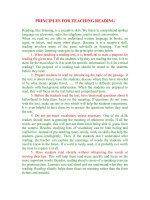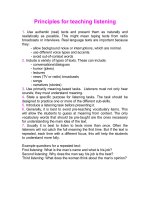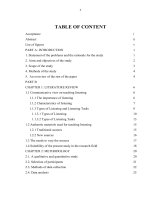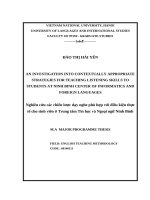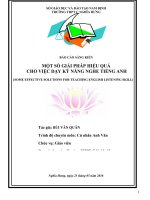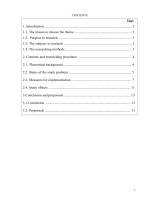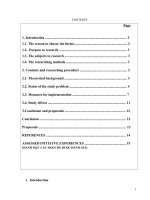Principles for teaching listening
Bạn đang xem bản rút gọn của tài liệu. Xem và tải ngay bản đầy đủ của tài liệu tại đây (37.21 KB, 2 trang )
Principles for teaching listening
1. Use authentic (real) texts and present them as naturally and
realistically as possible. This might mean taping texts from radio
broadcasts or interviews. Real language texts are important because
they:
- allow background noise or interruptions, which are normal.
- use different voice types and accents.
- avoid out-of-context words
2. Include a variety of types of texts. These can include:
- conversations/dialogues
- humor (jokes)
- lectures
- news (TV or radio) broadcasts
- songs
- narratives (stories)
3. Use primarily meaning-based tasks. Listeners must not only hear
sounds; they must understand meaning.
4. State a specific purpose for listening tasks. The task should be
designed to practice one or more of the different sub-skills.
5. Introduce a listening task before presenting it.
6. Generally, it is best to avoid pre-teaching vocabulary items. This
will allow the students to guess at meaning from context. The only
vocabulary words that should be pre-taught are the ones necessary
for understanding the main idea of the text.
7. Usually it is best to listen to texts more than once. Often the
listeners will not catch the full meaning the first time. But if the text is
repeated, each time with a different focus, this will help the students
to understand more fully.
Example questions for a repeated text:
First listening: What is the man’s name and what is his job?
Second listening: Why does the man say his job is the best?
Third listening: What does the woman think about the man’s opinion?

